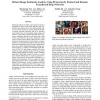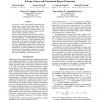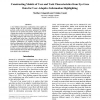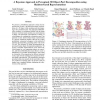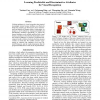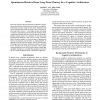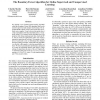AAAI
2015
8 years 8 months ago
2015
Sentiment analysis of online user generated content is important for many social media analytics tasks. Researchers have largely relied on textual sentiment analysis to develop sy...
AAAI
2015
8 years 8 months ago
2015
We propose a novel online learning method for minimizing regret in large extensive-form games. The approach learns a function approximator online to estimate the regret for choosi...
AAAI
2015
8 years 8 months ago
2015
A user-adaptive information visualization system capable of learning models of users and the visualization tasks they perform could provide interventions optimized for helping spe...
AAAI
2015
8 years 8 months ago
2015
The ability to determine patient acuity (or severity of illness) has immediate practical use for clinicians. We evaluate the use of multivariate timeseries modeling with the multi...
AAAI
2015
8 years 8 months ago
2015
We introduce an active learning framework designed to train classification models which use informative projections. Our approach works with the obtained lowdimensional models in...
AAAI
2015
8 years 8 months ago
2015
We present a probabilistic approach to shape decomposition that creates a skeleton-based shape representation of a 3D object while simultaneously decomposing it into constituent p...
AAAI
2015
8 years 8 months ago
2015
Utilizing attributes for visual recognition has attracted increasingly interest because attributes can effectively bridge the semantic gap between low-level visual features and hi...
AAAI
2015
8 years 8 months ago
2015
This paper presents the first functional evaluation of spontaneous, uncued retrieval from long-term memory in a cognitive architecture. The key insight is that current deliberate...
AAAI
2015
8 years 8 months ago
2015
We describe a new instance-based learning algorithm called the Boundary Forest (BF) algorithm, that can be used for supervised and unsupervised learning. The algorithm builds a fo...
AAAI
2015
8 years 8 months ago
2015
In order to be fully robust and responsive to a dynamically changing real-world environment, intelligent robots will need to engage in a variety of simultaneous reasoning modaliti...
